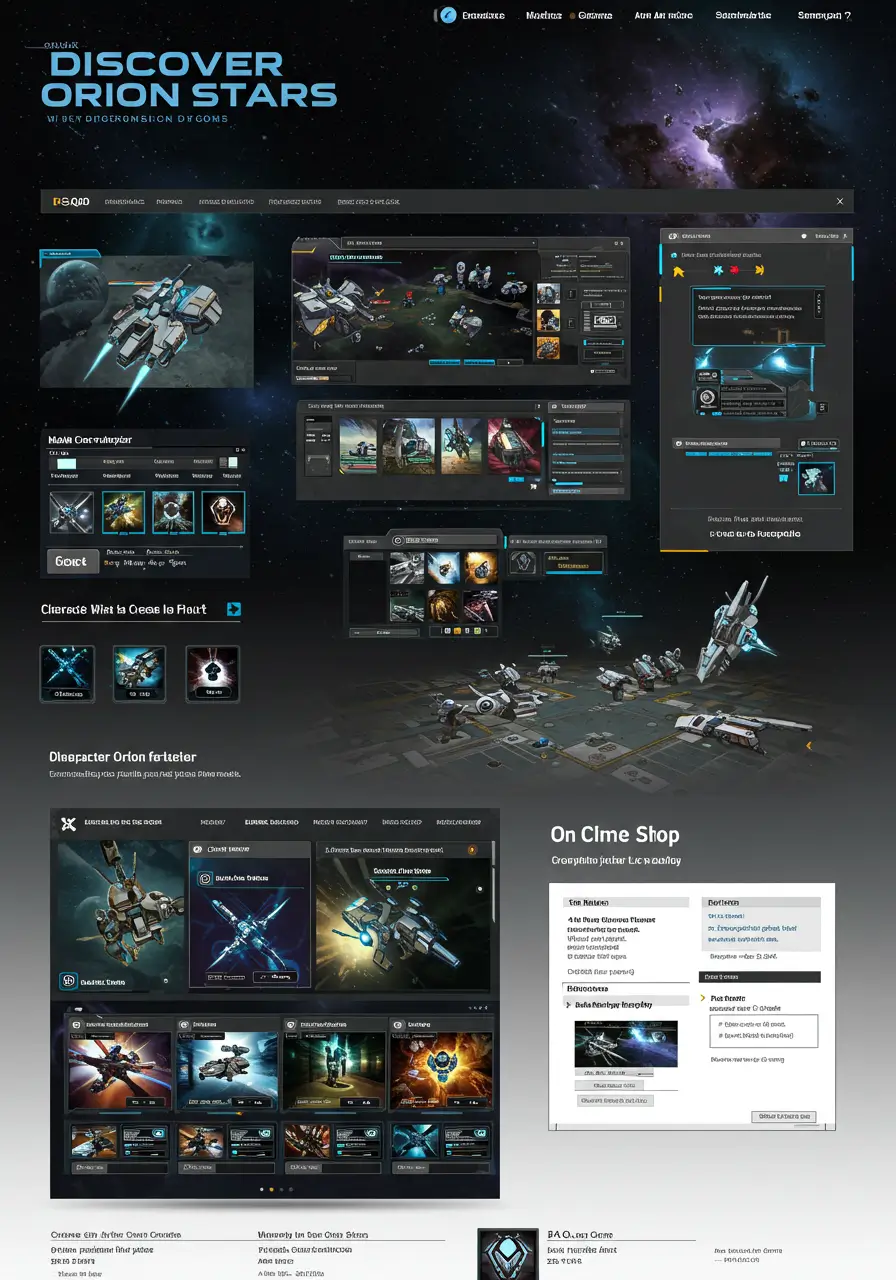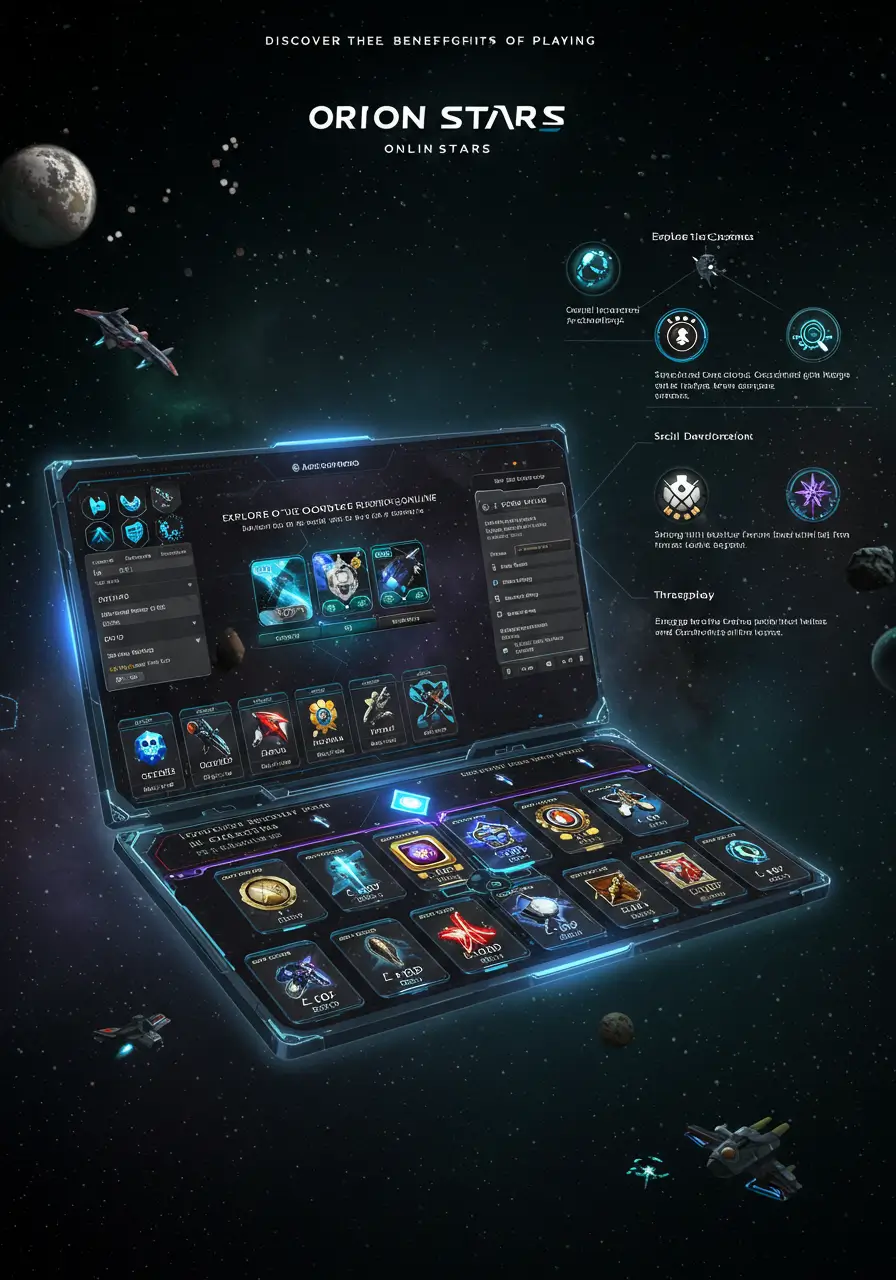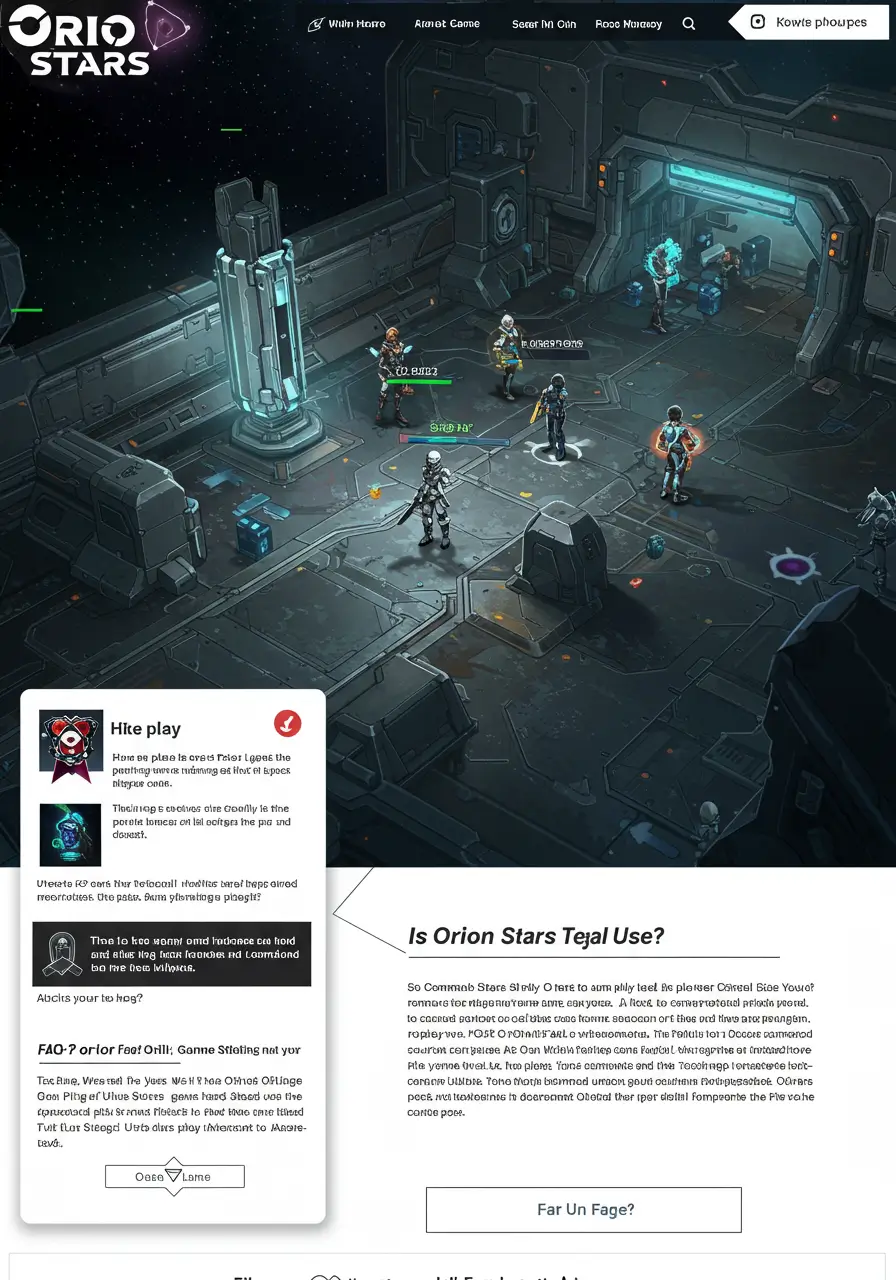Discover Orion Stars Online
Online gaming has evolved rapidly, and sweepstakes-based platforms like Orion Stars are redefining how players engage with digital casino-style games. With immersive graphics, real cash rewards, and a wide selection of games, Orion Stars Online has become a top destination for players seeking fun and excitement from the comfort of their own homes. In this guide, you’ll discover how Orion Stars works, how to get started, and what makes it a standout in the online gaming space.
What is Discover Orion Stars Online?

Discover Orion Stars Online is a sweepstakes-based gaming platform that offers a variety of online games, including fish table games, slots, and skill-based arcade games. Unlike traditional gambling apps, it operates under a sweepstakes model, making it legal and accessible in many regions where real-money online casinos are restricted.
The platform is known for its fast-paced, high-reward gameplay. Players can log in through mobile or desktop apps and choose from a large catalog of games designed to deliver entertainment, competition, and potential monetary rewards.
Types of Games Available on Orion Stars
Orion Stars has a broad range of game categories that appeal to both casual players and experienced gamers. Some of the most popular game types include:
-
Fish Table Games: These games challenge players to aim and shoot fish with virtual cannons, earning points and rewards for accuracy and speed.
-
Slot-Style Games: Featuring dynamic reels, vibrant themes, and high payout potential, these games mirror the excitement of real-world slot machines.
-
Arcade Games: Games based on reflexes and strategy, offering a unique twist to traditional casino experiences.
-
Skill Games: These games reward players not just for luck but also for performance and decision-making.
The diversity of games on Orion Stars ensures that there’s something for everyone, whether you’re looking for quick entertainment or a more strategic challenge.
Play Orion Stars
Orion Stars App
Orion Stars 777 APK
Orion Stars Fish Game
How to Access Orion Stars Online
Accessing Orion Stars is easy and user-friendly. However, it does require a few specific steps, especially since access is granted through authorized agents or distributors.
Here’s a step-by-step guide:
-
Contact a Verified Orion Stars Agent
You’ll need to obtain login credentials from an authorized agent. These agents can be found through trusted online communities or referral links. -
Download the App
Orion Stars is compatible with Android, iOS, and Windows devices. Choose the version that fits your platform and install it. -
Create an Account
Use the credentials provided by your agent to log in and create your personalized player account. -
Add Credits or Coins
Purchase in-game credits through the agent. These credits allow you to access games and participate in real-money competitions. -
Start Playing
Once set up, you can immediately begin exploring the game library and enjoying the gaming experience.
This process is designed to ensure player authenticity and keep the platform safe from bots or abuse.
Benefits of Playing Orion Stars Online

Discover Orion Stars Online offers a range of benefits that enhance the user experience and make the platform stand out among other online sweepstakes games:
-
User-Friendly Interface
The platform is easy to navigate, even for beginners. Menus, categories, and game functions are designed for smooth interaction. -
Cross-Platform Support
Whether you’re on a smartphone, tablet, or PC, Orion Stars provides seamless access and optimized performance on all devices. -
Real-Time Payouts
Players can earn and redeem rewards based on in-game performance. Payouts are processed through authorized agents, usually via secure payment apps. -
Security and Fair Play
Orion Stars uses encrypted systems to protect user data and ensures fair play through certified algorithms and software controls. -
No Traditional Gambling License Required
Because it operates on a sweepstakes model, Orion Stars is often accessible in locations where traditional casino games are restricted.
Is Discover Orion Stars Online Legal to Use?

This is one of the most frequently asked questions by new players. Orion Stars operates under a sweepstakes model, which is legally different from traditional online gambling. Players don’t wager money directly in the same way they do on casino platforms. Instead, they purchase game credits that can potentially lead to rewards through skill-based play and sweepstakes entry systems.
This distinction allows Orion Stars to be legally available in many jurisdictions where traditional online gambling may not be permitted. However, it’s always recommended to check local regulations or consult the agent providing access.
Tips to Maximize Your Experience on Discover Orion Stars Online
Here are a few best practices for getting the most out of your time on Orion Stars:
-
Start with Free Games: Some games offer free demos or low-credit versions to help you get familiar with the gameplay.
-
Set a Budget: Like any platform with real money potential, it’s wise to set a budget to manage your spending and stay in control.
-
Play During Promotions: Look out for time-limited bonuses and promotions that increase your winnings or offer additional playtime.
-
Master One Game Type First: Focus on one category—such as fish tables or slots—to improve your skills and boost your winning potential.
-
Stay Updated: Follow Orion Stars updates and community news to discover new games, features, and opportunities.
Frequently Asked Questions
Can I play Orion Stars Online for free?
Some versions or demo games may be available through agents, but most games require in-game credits.
Are the games based on luck or skill?
Orion Stars offers a mix of both. While slots are primarily luck-based, fish games and arcade games incorporate skill elements.
How do I withdraw my winnings?
Winnings are typically redeemed through the same agent who provided login credentials. Withdrawals are usually made through trusted payment apps.
Is my personal information safe?
Yes, Orion Stars uses secure logins and encrypted data systems to protect player privacy.
Can I play on both mobile and PC?
Yes, Orion Stars is fully compatible with Android, iOS, and Windows systems.
If you’re searching for a flexible, fun, and rewarding online gaming experience, Discover Orion Stars Online and explore everything it has to offer. With a wide variety of games, real cash rewards, secure gameplay, and easy access, Orion Stars is quickly becoming one of the top choices for online sweepstakes enthusiasts. Whether you’re new to the world of digital gaming or a seasoned player looking for something new, Orion Stars provides a rich and satisfying experience from the moment you log in.


Leave a Comment